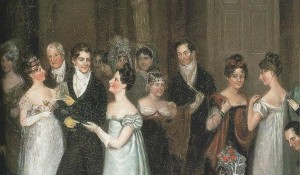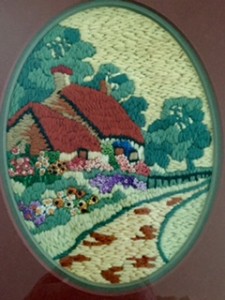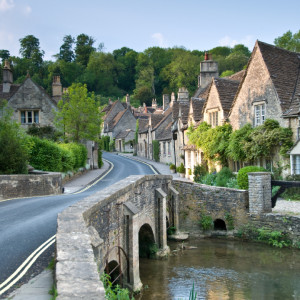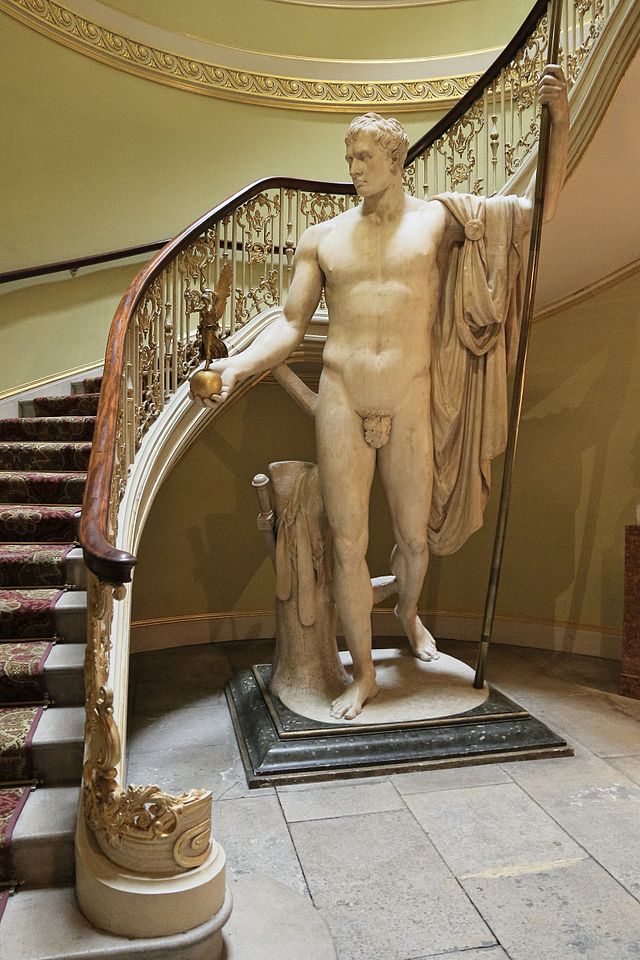 A few days ago I celebrated my 10-year blogiversary. I started blogging only a few weeks before my debut novel was due to hit stores in July 2005. (Ten years ago — gosh!) At the time I was working on my second novel, Castle of the Wolf, a gothic romance (or at least it was intended as a gothic romance) in which my English heroine inherits a castle in the Black Forest, but, alas, finds it inhabited by the grumpiest man imaginable (but sort of hot, too) (of course!). And she has to marry him (of course!). There’s an unfortunate incident with a dead mouse, another unfortunate incident with a not-dead bat, and a lady with sturdy boots who stomps all the gothicness to dust. Quite… eh… literally.
A few days ago I celebrated my 10-year blogiversary. I started blogging only a few weeks before my debut novel was due to hit stores in July 2005. (Ten years ago — gosh!) At the time I was working on my second novel, Castle of the Wolf, a gothic romance (or at least it was intended as a gothic romance) in which my English heroine inherits a castle in the Black Forest, but, alas, finds it inhabited by the grumpiest man imaginable (but sort of hot, too) (of course!). And she has to marry him (of course!). There’s an unfortunate incident with a dead mouse, another unfortunate incident with a not-dead bat, and a lady with sturdy boots who stomps all the gothicness to dust. Quite… eh… literally.
And because my heroine needed to somehow get from England to the Black Forest, I decided it would be awesome (AWESOME!!!) if she traveled up the Rhine, past the lovely castles of the Upper Middle Rhine Valley. And maybe I could put in one of those gruesome folk tales? (Because, see above, gothic romance.) Like, the story of the evil Bishop Odo of Mainz being devoured by mice in his tower in the middle of the river? Awesome.
So I spent about two weeks (or more) doing research on traveling on the Rhine and, incidentally, also on British tourists on the Rhine. (Two weeks of research for half a page in the finished book. Just saying.) I pushed back the date of my story to 1827 because that was the first year which saw steamboats on the Rhine, and even tried to see if I could dig up a timetable for said steamboats. (In case you needed any further proof that I tend to go a bit batty where research is concerned: there it is.)
The rising interest in the Rhine and in particular in the Upper Middle Rhine Valley (the super-beautiful part between Bingen and Koblenz, with all the pretty castles clinging to the hills on each side of the river — now a UNESCO World Heritage site) at the end of the eighteenth century was in large parts due to Romanticism as well as to the new aesthetic ideal of the picturesque.
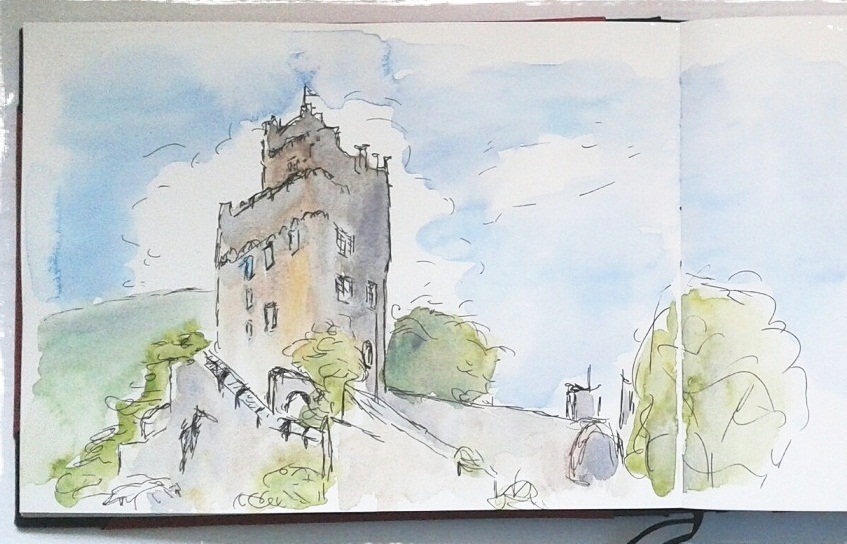
A sketch of Castle Sooneck
The first wave of British tourists arrived in the late eighteenth century — among them Anne Radcliffe, who afterwards wrote a whole book about her trip, Journey Made in the Summer of 1794, through Holland and the Western Frontier of Germany with a Return down the Rhine, published in 1795. And it seems that she was quite enchanted by what she saw:
“Sometimes, as we approached a rocky point, we seemed going to plunge into the expanse of the water beyond; when, turning the sharp angle of the promontory, the road swept along an ample bay, where the rocks, receeding formed an amphitheatre, […] then […] we saw the river beyond […] assume the form of a lake, amidst wild and romantic landscapes.”
The steadily increasing stream of tourists came to a halt during the Napoleonic Wars, but immediately resumed afterwards. Going to see the castles of the Rhine became so popular that later in the century the author Thomas Hood remarked,
“It is a statistical fact that since 1814 an unknown number of persons have been more or less abroad, and of all the Countries in Christendom, never was there such a run as on the Banks of the Rhine. It was impossible to go into Society without meeting units, tens, hundreds, thousands of Rhenish tourists. What a donkey they deemed him who had not been to Assmannshausen!”
Incidentally, the most wildly popular English poet also happened to write the most wildly popular account of a journey on the Rhine: since the publication of Byron’s Childe Harold’s Pilgrimage, many British tourists would drag a copy along on their travels so they could trace Childe Harold’s steps. This becomes obvious in the Shelleys’ History of a Six Weeks’ Tour from 1817:
“The part of the Rhine down which we now glided, is that so beautifully described by Lord Byron in his third Canto of Childe Harold. We read these verses with delight, as they conjured before us these lovely scenes with the truth and vividness of painting, and with the exquisite addition of glowing language and warm imagination. We were carried down by a dangerously rapid current, and saw on either side of us hills covered with vines and trees, craggy cliffs crowned by desolate towers, and wooded islands, where picturesque ruins peeped from behind the foliage, and cast shadows of their forms on the troubled waters, which distorted without deforming them.”
Soon, a whole tourist industry grew up around Rhine travels: 1822 saw the publication of the first panorama of the Rhine, consisting of a folded map of the river with larger pictures of the most important sights. Three years later, a publisher in Frankfurt released a panorama of the river and included a small leaflet with explanations of the sights in French, English, and German. (You can take a look at it here.)
Soon, proper guidebooks followed, like Baedeker’s Die Rheinreise (Journey on the Rhine) of 1832. On the other side of the Channel, the firm of John Murray, one of the most influential British publishers with authors like Jane Austen and Sir Walter Scott, started to publish the famous “Red Books”, the Handbooks for Travellers. And again, not surprisingly, the first of the series was the Handbook for Holland, Belgium and the Rhine.
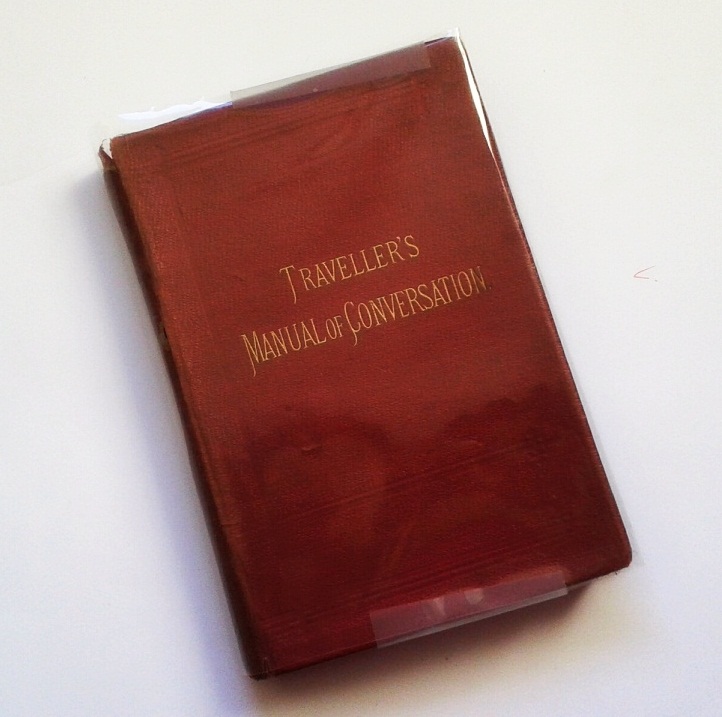
Another of Baedeker’s early publications: The Traveller’s Manual of Conversation in Four Languages
Murray and Baedeker soon joined forces and started to distribute each other’s guidebooks. To make them more uniform, Baedeker also used red cloth for the covers. Indeed, their guidebooks were all standardized, were regularly updated, and were made to fit comfortably into a coat pocket.
But that’s not all.
The star-based rating system that’s now used by online retailers, booksellers and review sites?
That was invented by John Murray for his guidebooks. (So now we know who’s to blame for that!)
The steamboat that were introduced in 1827 formed yet another part of the new tourist industry focusing on Rhine travels. The traditional way of traveling on the river was on boats dragged by horses, and the owners of the horses were not particularly happy about the new steamboats that took business away from them. And so, in 1848, the stable owners of the town of Neuwied fired cannon balls (!!!) at one of the steamboat to express their displeasure — a rather drastic measure (and not a particularly successful one: the boat was hardly damaged and, of course, the steamboat didn’t go away).
Have you ever been on a river cruise? And fellow authors, do you use guidebooks for your research?
